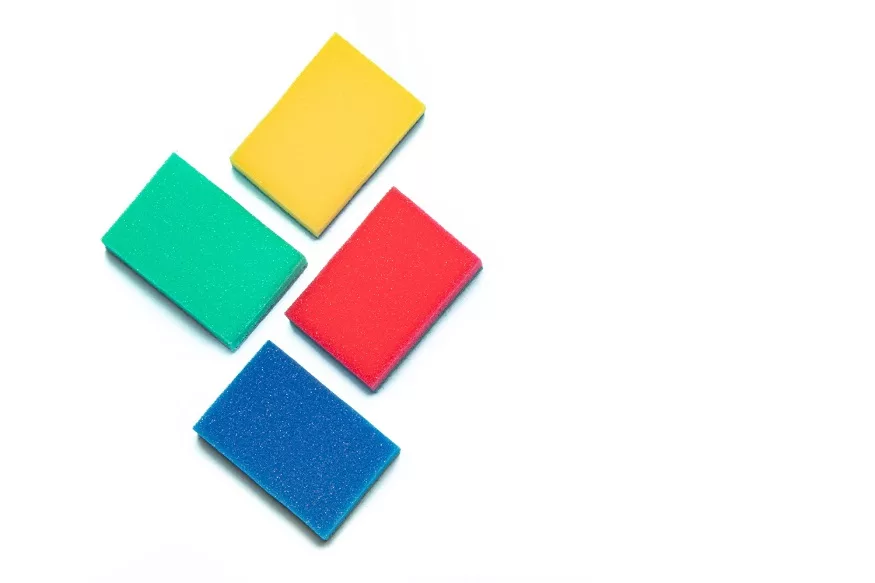Quadrilaterals are four-sided polygons that differ in their side lengths and angles, giving them a variety of special characteristics. A quadrilateral is a polygon that possesses the subsequent characteristics.
- Four sides and four vertices encircling four angles
- A quadrilateral’s interior angles add up to 360 degrees.
- Additionally, we may calculate the total interior angle using the polygon’s formula, which is (n -2) × 180, where n is the polygon’s side count.
- Quadrilaterals have sides that vary in length and angles that vary in measurement.
A notable class of shapes are parallelograms, which have opposing sides that are parallel and of equal length. They become supplemental due to this characteristic, which results in equal opposite angles. Rectangles are a particular kind of parallelogram that have equal diagonals and all right angles.
Also Read: Learn How to Memorise Multiplication Tables
Types of Quadrilaterals:
Four-sided polygons with a variety of features are called quadrilaterals. Following are the types of Quadrilaterals:
- Four equal side lengths and a right angle make up a square.
- Four unequal side lengths and a right angle make up a rectangle.
- Four parallel sides and an equal length make up a parallelogram.
- Four equal side lengths and a right angle make up a kite.
There are also irregular quadrilaterals that lack any particular properties. Because each type of quadrilateral has special qualities and uses in a variety of domains, such as mathematics, engineering, and architecture, studying quadrilaterals is crucial for students studying geometry.
Also Read: 15 Hands- On Math Activities for Preschoolers
Parallelogram:
It has two sets of parallel sides, making it a quadrilateral. The opposing sides have the same length and are parallel. The measure of the opposing angles is equal. Side AB is parallel to side CD and side AD is parallel to side BC in the parallelogram ABCD.
Additionally, the two diagonals came together to cross at the midpoints. E is the place where both diagonals converge, as seen in the image below. Thus, Length BE = ED and Length AE = EC.
Properties of a Parallelogram:
A specific kind of quadrilateral with several distinctive features is a parallelogram. Key properties of parallelograms are listed below:
- Equal length at opposite sides: both sides of a parallelogram share equal length. This implies that the lengths of the two pairs of opposite sides will match up when measured.
- Equal opposite angles: In parallelograms, the opposite angles are congruent, or they have the same measure. Put another way, the angles created by the junction of the two sets of opposing sides will have the same measure if you measure them.
- The angles that follow are supplemental. A parallelogram’s consecutive angles sum up to 180 degrees.
- The intersection of a parallelogram’s sides at their centre signifies that the sides are intersected by one another. The place where each side splits into two equal portions is known as the centre.
- The four sides of parallelograms are known as the opposite sides because they are parallel to one another. This suggests that even if you stretch the sides, they will never touch.
- As the sum of the adjacent angles in a parallelogram equals 180 degrees, the subsequent angles are supplementary. In other words, the product of an angle and the angle next to it is always 180 degrees.
- In parallelograms, the opposite angles have equal measurements when they are congruent. This is an additional outcome of opposing sides being parallel.
- A parallelogram’s diagonals split the shape into four congruent triangles. The parallelogram is divided into two triangles with equal areas and angles by each diagonal.
- A parallelogram’s four inner angles always have a total length of 360 degrees.
Due to these characteristics, the parallelogram is a geometric form that is both intriguing and significant in mathematics. It is utilised in many different mathematical proofs and geometric difficulties.
Also Read: Understanding Vedic Maths & its Usage for Beginners
Rectangles:
Rectangles are employed in many disciplines, including mathematics, engineering, and architecture. They are also frequently seen in daily life. They are especially helpful for building squares, which are a specific instance of rectangles with equal sides, and right angles since they have opposite sides of the same length.
Properties of a Rectangle
A rectangle is a quadrilateral with four sides. A rectangle is a quadrilateral that has the following key properties:
- Four sides: A rectangle is a closed geometric object with four sides.
- Equal length on opposite sides: The lengths of the opposite sides in a rectangle are equal. This implies that the lengths of the two pairs of opposite sides will match up when measured.
- Equal opposite angles: In a rectangle, the opposite angles are congruent, or they have the same measure. Put otherwise, all the angles that are created when two pairs of opposite sides intersect have the same measure and are therefore all right angles.
- When consecutive angles come together to form a rectangle, they are supplementary and add up to 180 degrees. According to this, the total of the angles’ measures that are next to one another (sharing a side) will equal 180 degrees.
- Rectangular diagonals indicate that a rectangle’s diagonals are bisected when they intersect at a central point. The intersection of each diagonal into two equal segments is known as the midpoint.
The rhombus is another popular form with equal side lengths and opposing parallel sides. Rhombi, in contrast to rectangles, feature equal angles that are usually not right angles. Squares, which have all their sides equal in length and all their angles at 90 degrees, are a special case of both rectangles and rhombi.
One set of opposite sides on a trapezoid is parallel, but the other pair is not. Their inner angles add up to a full 360 degrees. In contrast, a kite typically has one pair of equal opposite angles and two pairs of adjacent sides of equal length. Their sides are not parallel.
Also Read: Tips to Solve a Rubik’s Cube for Kids
Understanding the distinctive qualities of these several quadrilaterals is essential for both geometry and real-world applications like design and building. Knowing the unique laws governing each kind of quadrilateral aids in the solution of issues pertaining to computations of their dimensions, angles, and areas.
At EuroSchool, the chapter on quadrilaterals is an essential part of the mathematics curriculum. The curriculum explores each quadrilateral’s angles, side lengths, and diagonals, highlighting its distinct qualities. There is also an exploration of practical applications in engineering, design, and geometry. The objective of this chapter is to provide students with a solid foundation in mathematics by fostering their geometric reasoning, problem-solving abilities, and comprehension of the relevance of quadrilaterals in practical situations.










